And now we come to the part where the 30 Euro entry price almost got me out of the house. Not because I don't know how to get something like this even cheaper, or where you could get such alternatives – the normal customer is simply offered a lot for the money here, without having to look for it for hours. I admit it, because I was really skeptical at first, because there are now so many useless USB audio dongles that you could easily glue a house together with it.
Noise voltage distance
But technical data are only theoretical in nature and often have nothing in common with what can then be measured in the wild. Let's get to the positive: the crosstalk between the channels is almost inmeasurable and certainly not audible. The external voltage distance on the running PC with fully turned up volume is also completely fine, which impressively confirms the first measurement. With just under 5 mV of 1 K, the previously determined lukewarm setting for distortion-free full control is quite good in the race. The self-noise with 2 to 3 mV still goes down here. It would certainly be even better, but not for this price.
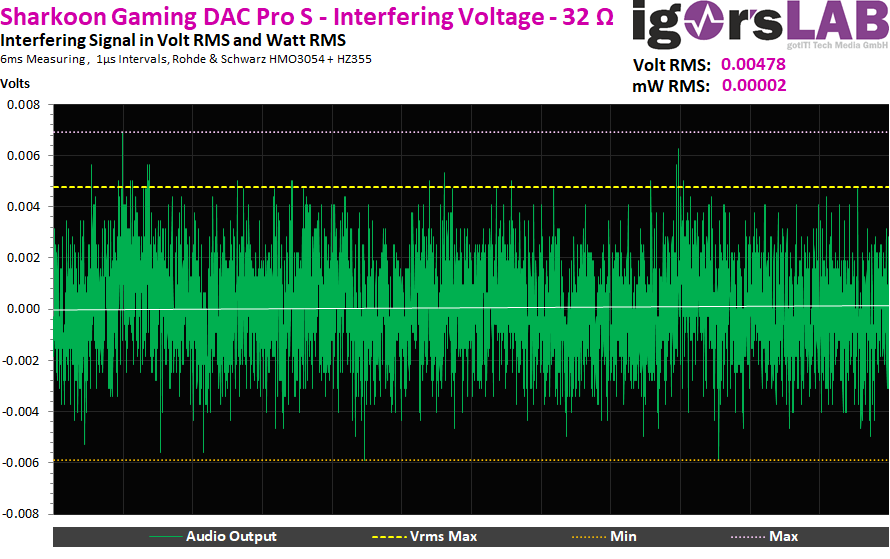
Frequency response
I measure here from 10 Hz to approx. 20 KHz an absolutely linear course (+/- 0.2 dB), up to 44 KHz it is then -2.7 dB, also not bad. There are no worse improvements like an exuberant and silly frequency-response-hoppse a la bathtub. The gamer will surely thank it, the ambitious music listener with a decent headset certainly too. Please let the rest be happy with other products including drivers.
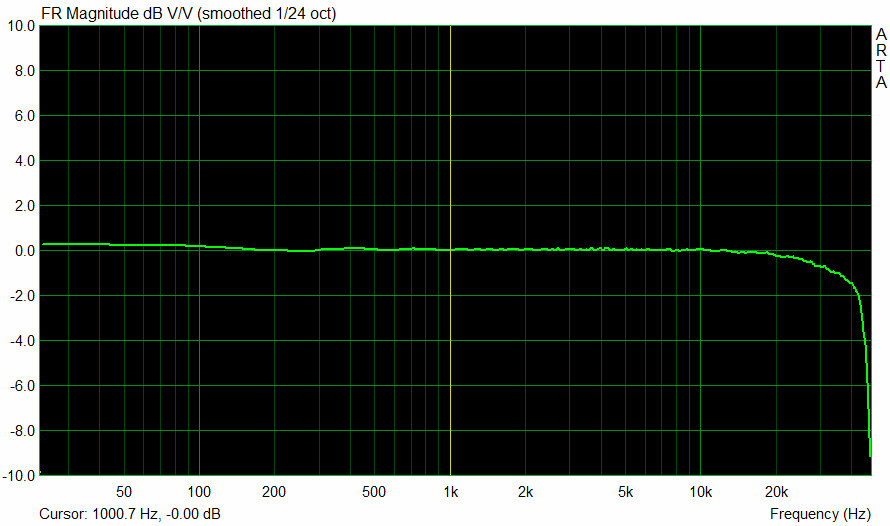
Output voltage and output power
Let's start at the upper impedance end and start with 1 kiloohm. With 1.96 volts RMS I reach almost the maximum of the circuit with almost pinpoint accuracy. This fits already, the output power of 3.9 mW RMS per channel is rather purely statistical. Because here I only simulate a normal, closed output such as to an active loudspeaker. This, too, goes quite loud and tidy. The full control of the system is therefore guaranteed.
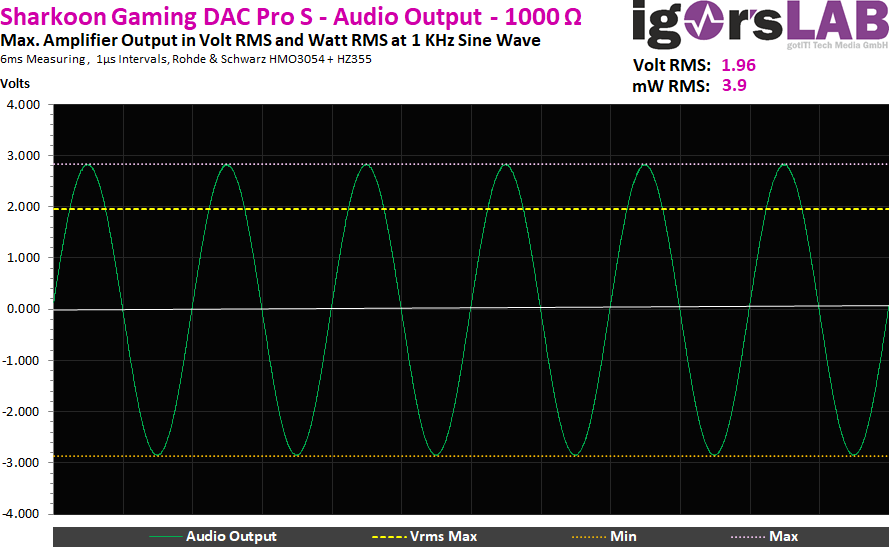
From 600 to 500 ohms down we now get into the areas of commercially available headphones. Flexible gain is not a magic word here, because it stays at the almost 2 volts and this time with 7.5 mW output power (sum 15 mW).
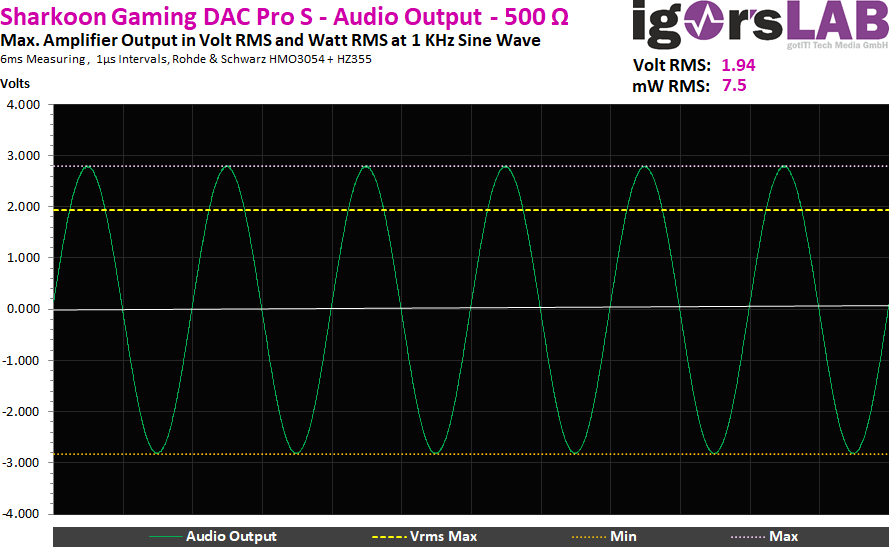
At 250 ohms are good headsets, lots of studio and hi-fi headphones. Still just under 2 volts are really neat and with a good 15 mW per channel (total 30.2 mW) this is already suitable to drive a user with a Beyerdynamic MMX300 various sweat beads on the earlobe. Here, however, for my personal preference, Extreme Impulse and HDR (High Dynamic Range) still lack the one volt, which unfortunately one has dispensed with, for whatever reason. If you hadn't gotten a little scared of your own courage and too much background noise with more gain, it would have been THE ultimate (and no-frills) USB sound solution for such headsets.
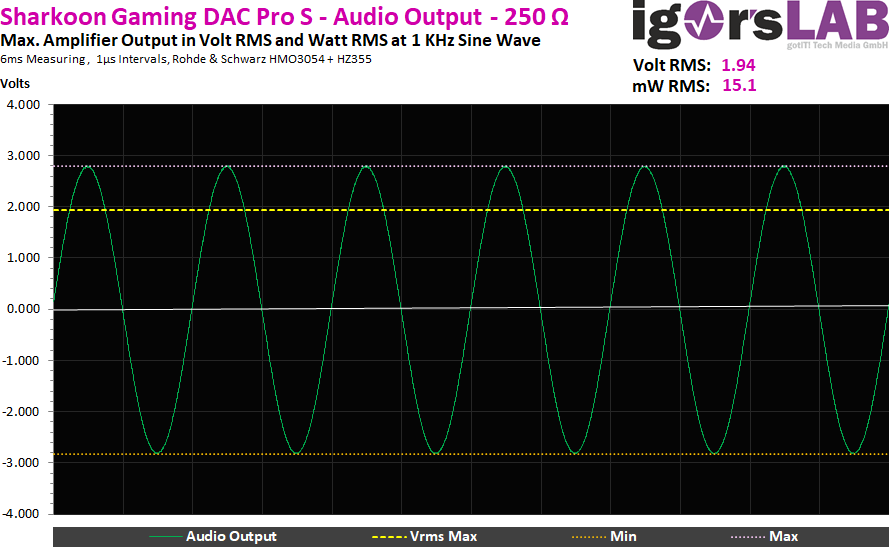
With almost 103 mW per channel, something goes to 32 Ohm! Even if the limiter is already slightly grasped and the voltage goes down to 1.81 volts RMS. This should be more than enough for almost all headsets. The curves are absolutely clean and with a little more klirr probably 110 mW+ would have been in it. But since something like this bothers me, we stick to the area that can be delivered cleanly and neatly.
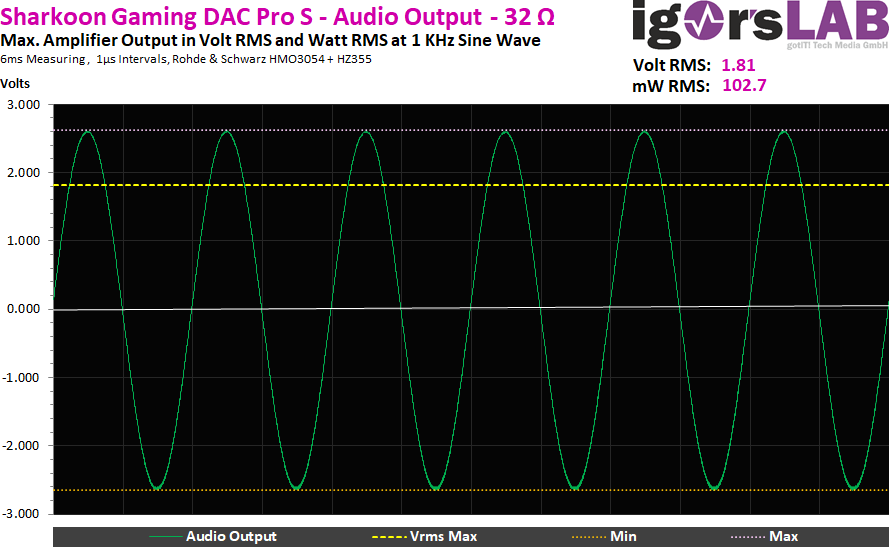
Everything below 32 ohms goes more and more into the pants with decreasing impedance. Up to 16 ohms I would go along with it, from below the chip has really finished. Then the protective circuit limits and the voltage breaks down to 0.34 volts at 8 ohms. The not even 15 mW at 8 ohms are not even the real problem. If you look at the curves, we already see significant distortions in some vertices.
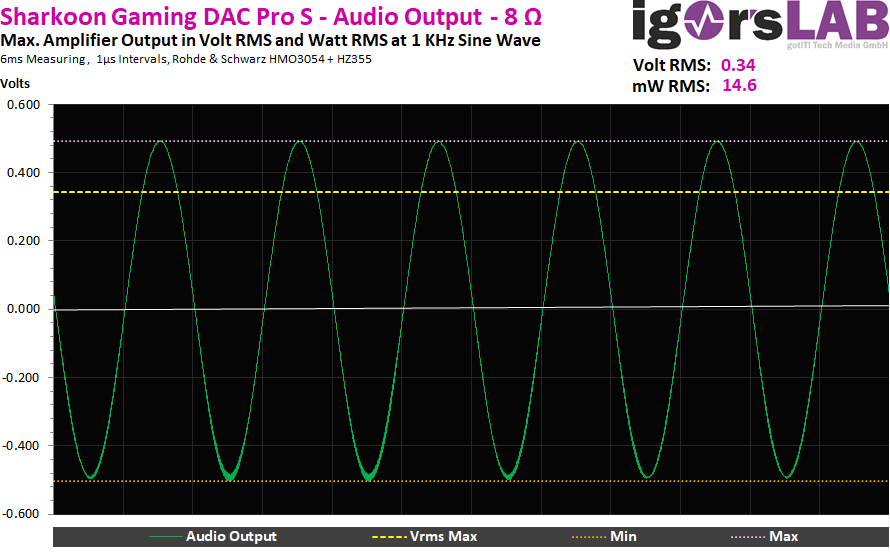
Sharkoon Gaming DAC Pro S

































Kommentieren